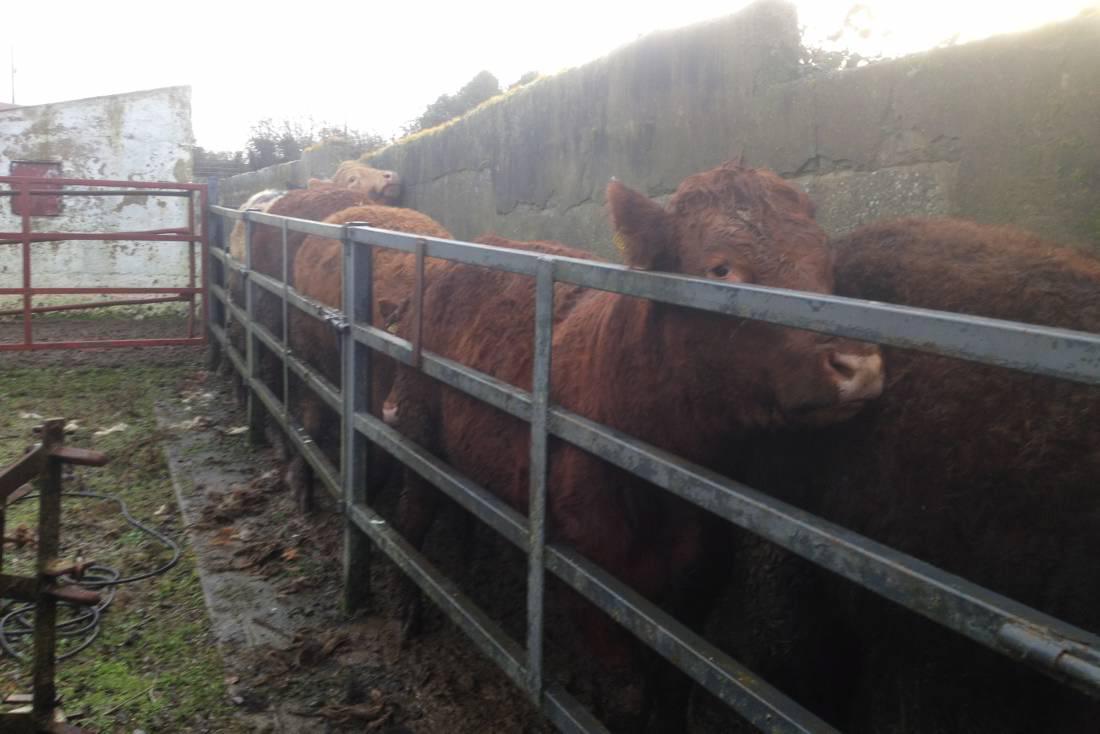The store bullocks received their full MOT on Saturday. With no stone left unturned, they were treated for fluke, worms, lice, clostridial vaccine and had their tails clipped.
As I mentioned in a previous article, we have moved away from the Ivermectin type wormers in recent years but this will be the first year that we will not treat any animal with injectable wormer.
However, I am been very careful in my selection of wormers so that I cover all areas of worm infection.
On Saturday, they were treated with Levafas Diamond. This product has Levamisole as the active ingredient and should cover all type 1 worms. It also is effective against the control of adult liver fluke and rumen fluke. The stores have now been housed for six weeks, so I would be hopeful that all fluke has matured and this should be an effective treatment.
I have been questioned lately on whether there is benefit to treating rumen fluke after a very dry summer of grazing. I feel more comfortable having treated it, rather than wondering is it affecting the performance of my animals.
I have dung sampled my store cattle in past and they consistently showed presents of rumen fluke, especially as I buy animals from a very varied background. I intend taking more dung samples in the New Year so I can identify if the treatment was effective. I then intend treating them with a Benzimidazoles based wormer to cover any worms still present in January/February. Drenching was completed with relative ease using the hook drencher. The most attractive appeal of the Levafas Diamond is the cost which is only €2.25 per animal.
Clostridial vaccine
The Clostridial vaccine is the only vaccine at present we are using. This vaccine covers Blackleg, Braxy, Black Disease and Tetanus. We haven’t gone down the route of treating for BVD, IBR etc. Maybe we are foolish but I don’t feel we are losing out on any performance but it could be avenue to explore in future. This is costing us €1.50 per animal.
For lice our treatment is cheap and cheerful. We use Taktic which is mixed with water and sprayed onto animals using a quad sprayer. It is usually applied three times over the period of the winter and it always gives good control of lice, ticks, mites, mange and keds. We apply approximately two litres per animal from the back of the neck to the top of the tail head. This costs €0.30 cent per animal.
To round off the treatments, the bullocks had their tails trimmed. I find it keeps them cleaner and is just more pleasing on the eye.
Sick animals
So far, thankfully, we had no problems with sick animals. We however found one animal slightly lame as they came out of the shed, so he was treated with 30cc of a long acting antibiotic. Nothing could be found in the hoof, however he did have a slight swelling on the front of the hock. We will keep him monitored and it is gets any worse he will be let out into a paddock.






 This is a subscriber-only article
This is a subscriber-only article












SHARING OPTIONS: